The Top 8 Intermediate Corals
- Sep 12, 2021
- Anshika Mishra
- 1046 0 0
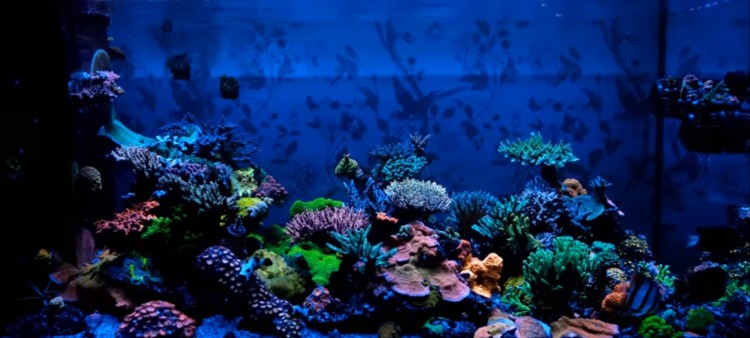
In this article, we have compiled the list of what is believed to be the top 8 corals for intermediate reefers ready to take the next step. We will explain what intermediate reefers means after the list and why you might be ready for these corals even if you still consider yourself to be a bit of a noob.
8. Acans/ Micromussa
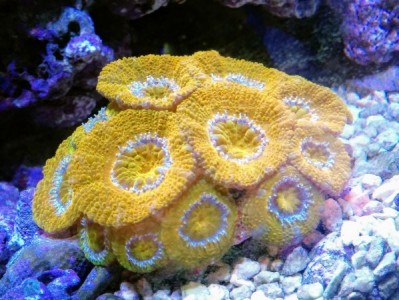
They are beautiful LPS corals, some of which have beautiful colorful bodies. One thing that makes these corals intermediate is that they need low light and can lose their colorings if you overcook them, which is easily done is modern, powerful LEDs.
Despite that, they are still hardy enough, and they will accept some aquarium food such as pellets which is a great way of helping some LPS corals when it comes to taking care of their health.
7. Leptoseris
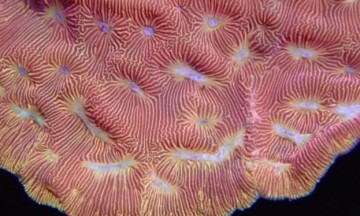
There are tons of coral color varieties, but none match the rather unique brilliant orange and green jack-o-lantern. It is an encrusting coral with a rather flappy skirt at its edges and very small sweeper tentacles. So, technically it can sting its neighbors, although, at the risk of insulting the corals' masculinity, they don't seem to do much damage.
They are also readily available as hardy agriculture frags instead of wild-caught colonies, which means you will get corals used to aquarium life and, therefore, more likely to survive and thrive.
6. Letastrea
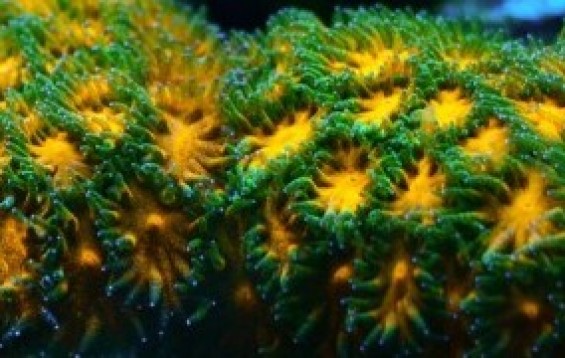
It is another encrusting coral, so it is probably a good candidate for isolation on an island to stop taking over your rock work. However, it does make pretty slow progress, and its growth speed is more tortoise than hair.
They also don't have sweeper tentacles so that they won't wipe out anything in a six-inch radius, unlike some corals on this list. The John Deer left Australia, presumably because it was discovered by a man on a tractor or because of its green and yellow colorings. Who knows?
It is an awesome intermediate coral, and you should definitely get one in your tank.
5. Duncan
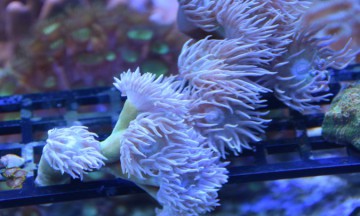
Though this coral is not as colorful as the other corals on this list, it goes highly on the wavy movement front and hardiness and availability. You can through a stone in your local fish shop and probably guarantee you'll hit a Duncan, which should mean that they are cheap.
Duncans probably have the best shot at qualifying as beginner corals of all the corals on this list. So, they are probably still worth a punt, and even you class ourselves as a noob.
4. Trachypyllia
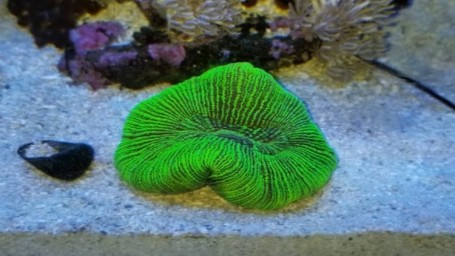
These corals are generally considered easy enough to keep, and if you have the budget, you can get the Trachy in some of the most starting rainbow colors. In addition, their fleshiness and growth pattern makes them a great candidate for a centerpiece coral.
They are a little less spectacular but still pretty awesome color varieties available if you don't fancy shelling out half a mortgage payment.
3. Chalice
These corals have some of the most mind-blowingly brings and varied colors in the hobby. Unfortunately, they are a little fiddly to work out in terms of placement, and some of these apply named Raja Rampage have long stinging tentacles that mean it needs to be placed at a safe distance, several inches away from its neighbors.
This, combined with its relatively modest look, light, and flow requirements, makes it a great candidate for your weir box, an underused area of coral real estate in most tanks.
2. Euphyllia
![]()
For this list, we are including Frogspawn, Hammer corals, and Torch corals. Although they have stinging sweeper tentacles, they won't sting each other, so they can be kept together as part of a garden except torch corals, which are about as aggressive as Chalices.
Low to moderate light and flow is the order of the day, although torches probably favor a little more of both. The torches really make this entry so high at number two because they can be just so damn stunning. Although of course with great color comes great price. But, if you can't stretch to a few hundred dollars for a single head, you should probably be able to pick up a reasonable size blue-tip green torch for well south of a 100.
1. Scolys
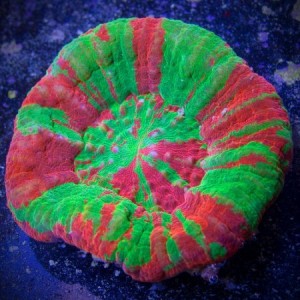
While green in reading corals aren't exactly scared in the hobby, there is nothing quite as beautiful as the bleeding apple Scoly. Under blue LEDs, they glow brighter than almost any other coral in the hobby and have absolutely mesmerizing patterns.
Scolys are also very hardy, and you can recover a sick on back to health just by feeding it. In fact, such is its hardiness, and it is often cited as a beginner coral. However, it is not beginner-friendly because it does not do long term above 77 Farhenheit or 25-degrees Celcius.
But if you are looking for a centerpiece coral without the worry of an expensive purchase dying, this is about as safe a bet as you'll get.
The Intermediate Reefer
Though you don't need a degree in marine biology or even two years of experience in the hobby, you simply need to have your tank up and running ideally for six months or more. You'll need to know your key parameters by testing alkalinity, nitrate, and phosphate weekly and ideally have at least a rough idea of your tank's PAR levels.
You will need to know about dosing and the basics of keeping stony corals to include a bit of knowledge of corals warfare, placement, lighting, and flow requirements, all of which can be discovered using an excellent reef-keeping website called Google.
So, there's every chance you consider yourself a beginner, but in reality, you meet the criteria we have set out for intermediate. And all corals on this list are still fairly hardy and forgiving, so they can come back from the occasional near-death experience, which makes them reasonable candidates for the intermediate reefers or even beginners with a higher degree of testicular fortitude.


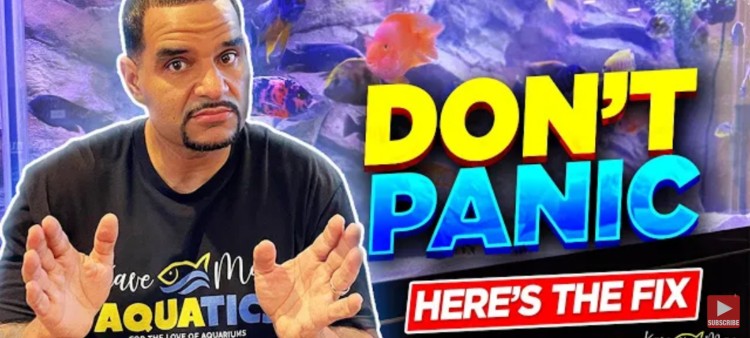



About author